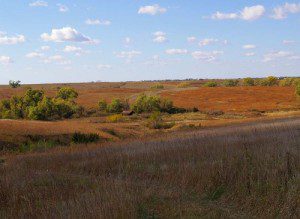
As solutions to the technical challenges of producing cellulosic-based biofuel efficiently are solved, demand for cellulosic feedstocks such as switchgrass is expected to increase.
Armed with satellite-derived data of Nebraska grasslands, U.S. Geological Survey (USGS) scientists demonstrate high potential for growing biofuel crops with relatively little energy input and environmental impact.
The pioneering investigation used remote sensing data from satellites to identify detailed areas of the Greater Platte River Basin (most of Nebraska, parts of adjacent states) that are best suited for producing cellulosic (from the cell walls of plants) biofuel derived from hardy switchgrass, a native plant that grows wild or is easily cultivated.
“This innovative scientific study takes some of the guesswork out of deciding whether it could be feasible to raise a potentially high value crop for biofuels on America’s grasslands,” said USGS Director Marcia McNutt. “Using non-food crops for fuel grown on land not now under cultivation is a low-impact step towards America’s energy independence.”
The maps of areas with high biofuel production potential were produced by combining satellite-derived vegetation data with weather data, soil types, terrain, and other physical data.
Image courtesy of David Peterson.

